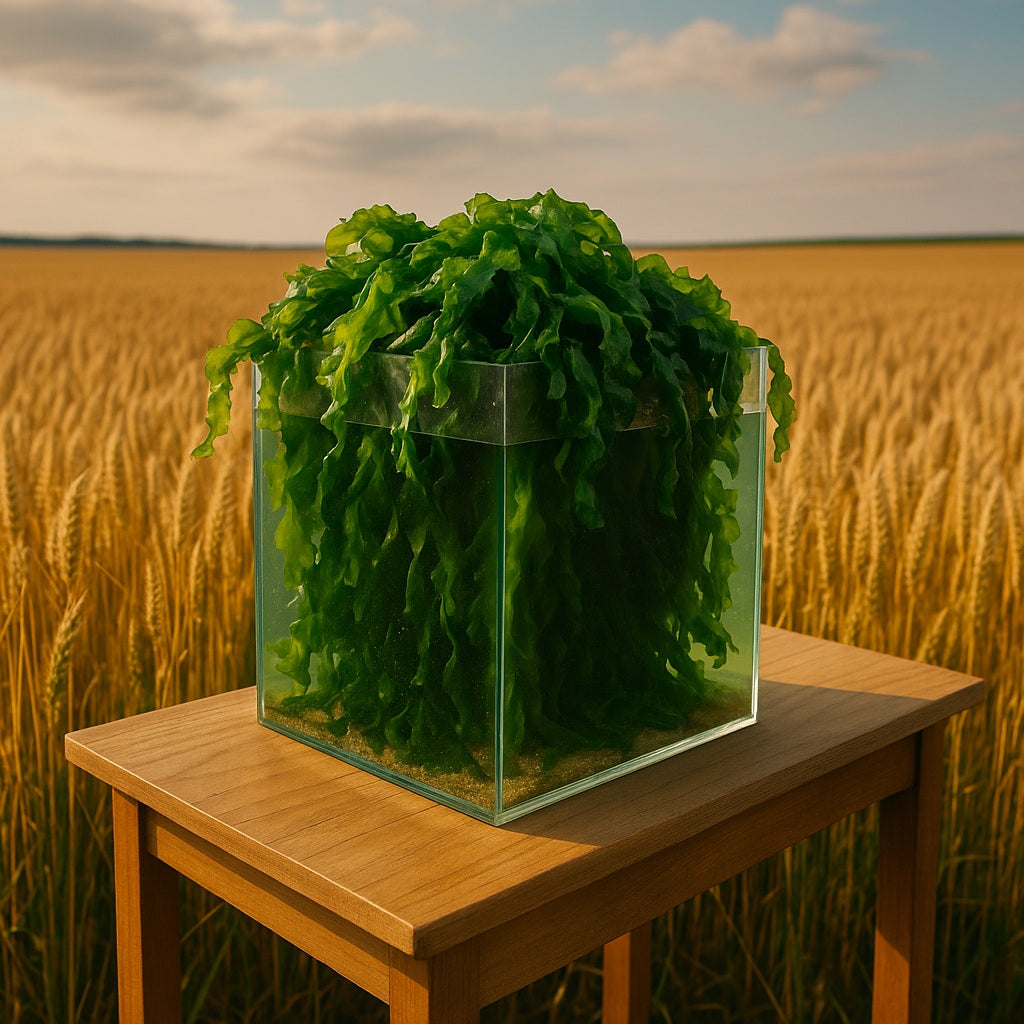Conventional agriculture now occupies nearly 50% of Earth’s habitable land, converting forests, grasslands, and wetlands into monocultures. Every year, an estimated 15 million hectares of native ecosystems are cleared for cropland and pasture, eroding habitats and releasing carbon. To compensate for soil depletion, farmers mine fertilizers—further degrading land quality.
Seaweed’s Land-Sparing Potential:
-
Ultra-High Productivity: Our cultivated seaweed can yield up to 100 tonnes dry weight (1,000 tonnes wet weight) per hectare annually—at least 50 times more biomass per unit area than staple grains.
-
2% Land Footprint: To produce 100 tonnes of seaweed biomass, we need only 1 hectare of seaweed pools, compared with 50 hectares of cropland for equivalent biomass on land (even before accounting for nutrient content). That saves 49 hectares of terrestrial space for each hectare of seaweed farm.
-
No Soil Mining: All mineral nutrients (nitrogen, phosphorus, trace elements) are sourced from the ocean. We never deplete or mine soils to grow seaweed, sparing land from degradation and desertification.
Consider an example: If Australians replaced just 10% of national pasta production (roughly 1 million tonnes of wheat flour per year) with seaweed-derived nutrition, we could spare approximately 1 million hectares of wheat farmland. That’s roughly the size of Tasmania—land that could revert to natural ecosystems or be used for reforestation, carbon sequestration, and biodiversity conservation.
By shifting even a small fraction of food and feed production from terrestrial fields to seaweed farms, we can reduce pressure on arable land, restore soil health, and protect habitats that once fed our communities.
